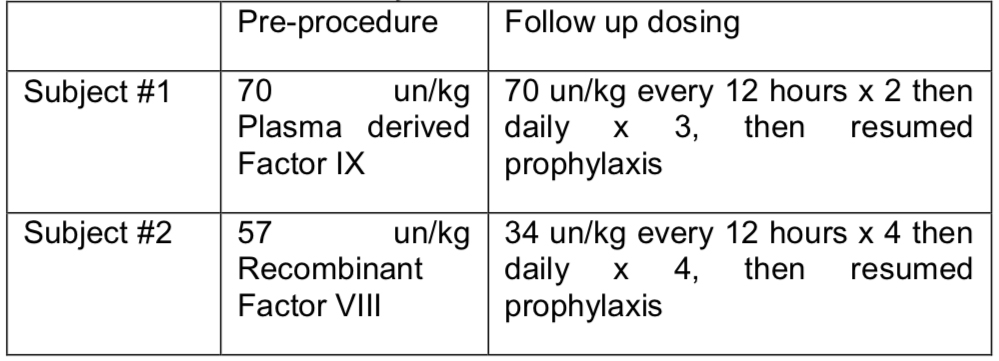Objective:
To describe successful buffalo hump removal in 2 patients with Hemophilia and HIV.
Methods/Case Description:
Development of a dorsocervical fat pad, or buffalo hump, occurs in 2-13 % of HIV infected individuals, the etiology is unclear. Two HIV positive patients, one with severe Hemophilia B and the other with severe Hemophilia A had symptomatic buffalo humps for 12 and 7 years respectively. Symptoms included headaches, sleep disturbances, neck stiffness and pain. These symptoms adversely affected activities of daily living. Their HIV disease was well controlled and stable. Both patients had been offered an open excision over liposuction, but the former carries a higher risk of bleeding and pain, as well as poor cosmetic result. The decision was made by a second plastic surgeon to attempt removal through liposuction. For hemostasis they received:

Both patients underwent similar liposuction procedures. 400-600cc of a tumescent solution containing epinephrine and Xylocaine was infiltrated into the subcutaneous tissue in order to minimize bleeding. Traditional liposuction was then performed through 4-5 stab incisions using a variety of cannulas with multiple passes through the fatty tissue attempting to aspirate and break up the fibrous septum connecting the buffalo hump to the cervical fascia. The deeper peri-fascial fat was removed first with later passes aimed at removing the more superficial fatty tissue. Lastly, multiple passes were made in a fan-like distribution to create an even and level contour of the back. Before closing the incisions, the remaining tumescent solution was infiltrated into the remaining cavity to prevent post-operative bleeding and to help with pain control. Both patients tolerated the procedures well with no peri-operative complications and were done in a same day surgery suite, admission was not required.
Results:
Both patients had complete resolution of pre-surgical symptoms and achieved a cosmetically pleasing outcome. Neither patient experienced any recurrence of the fat accumulation 8 and 5 months after the procedures.
Conclusions:
Liposuction is a minimally invasive modality that can be used to successfully remove buffalo humps in people with severe hemophilia, allowing for resolution of pain and improved quality of life.

